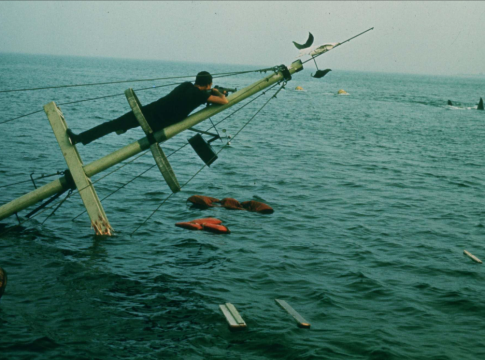The Lasting Bite of Jaws: 50 Years of Cinematic Shark Terror
Fifty years ago, a film forever changed our relationship with the ocean’s apex predator. Jaws unleashed a wave of terror and fascination with its nerve-wracking soundtrack and groundbreaking practical effects. Now considered the first summer blockbuster, its ripple effects extend far beyond the silver screen.
A Killer Premise
At its core, Jaws is a gripping story of three men united by a common goal: hunting a ruthless great white shark that’s turned a picture-perfect beach town into a nightmare. Featuring Amity Island’s police chief Martin Brody (played by Roy Scheider), genial oceanographer Matt Hooper (Richard Dreyfuss), and the grizzled fisherman Quint (Robert Shaw), this trio embarks on a perilous quest—keeping both the water and the locals safe from the toothy terror lurking beneath the waves.
A Double-Edged Sword
But here’s where things get murky. While the film captivated audiences and became a pop culture staple, it also had chilling real-world implications. According to Time, Jaws played a big role in shaping public perceptions of sharks, turning them from awe-inspiring creatures to bloodthirsty monsters. The sensationalist portrayal led to a surge in trophy hunting and a chilling decline in shark populations. It’s hard to think of a worse fate for a beloved fan favorite than to become the villain in human eyes.
Even director Steven Spielberg has voiced his regret. In a candid 2022 interview with the BBC, he admitted, “I truly regret the decimation of the shark population because of the book and the film.” Cue the tears, right?
The Reality Check
Let’s set the record straight: While Jaws features a rabid killer shark, the actual statistics tell a different tale. Globally, sharks are responsible for roughly ten human fatalities a year, while we humans wipe out around 100 million sharks annually. Perhaps it’s time to reevaluate who the real monsters are!
Celebrating Half a Century
Despite its grim impact, Jaws still reigns supreme in cinema history. Roger Ebert dubbed it “one hell of a good story, brilliantly told,” and 50 years later, we can confirm that the legend endures. Filmed in the unpredictable ocean rather than a controlled tank, the film faced its share of chaos with actor feuds and mechanical shark malfunctions. Yet those challenges only add to the cinematic lore.
As we celebrate this iconic film’s anniversary, there’s a silver lining on the horizon. Recent years have seen growing awareness and concern for shark conservation. The tide is turning, and conservationists are using the film’s anniversary as a springboard for renewed efforts to protect these misunderstood creatures.
Shifting Focus
With a push for shark welfare gaining momentum, the conversation is shifting from fear to conservation. The goal? To embrace these magnificent ocean dwellers rather than vilify them. As reported by the BBC, calls for shark protection are growing louder, and it seems the real legacy of Jaws might just be its role in reconnecting us with the powerful creatures it once demonized.
So the next time you dive into your beach read or settle in for a movie marathon, remember: While Jaws was a cinematic triumph, it’s high time we embrace the ocean’s fearsome rulers with a tad more respect and understanding. After all, there’s more to these mysterious beings than just their fearsome teeth! 🦈

Covers viral stories, pop culture, and breaking celebrity news.
Bio: Jamie has a sharp eye for what’s buzzing online, tracking social media trends and entertainment headlines around the clock.

